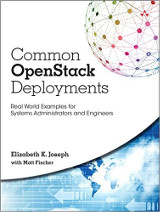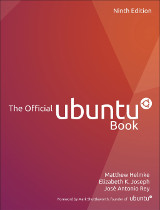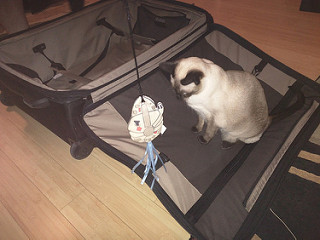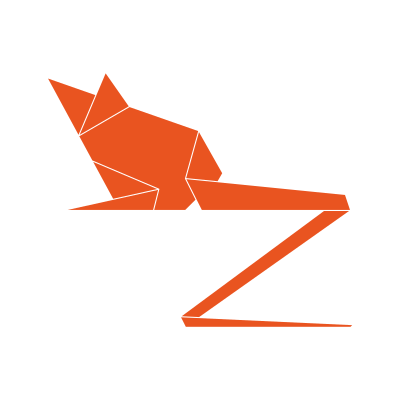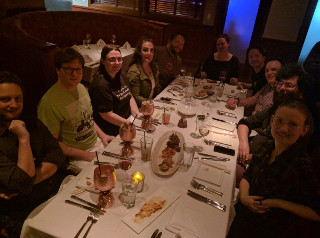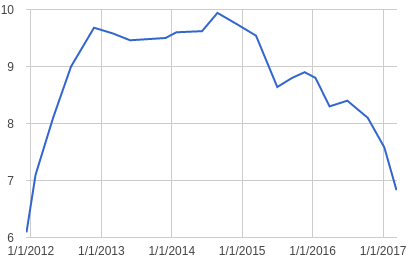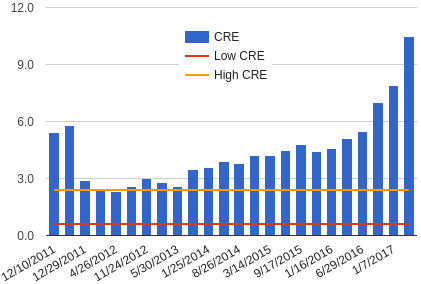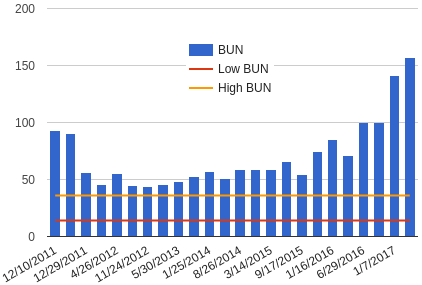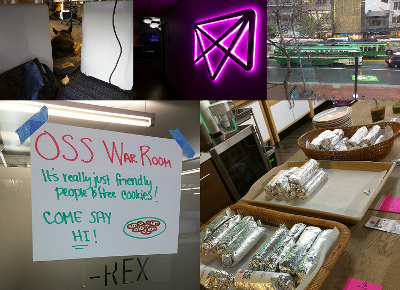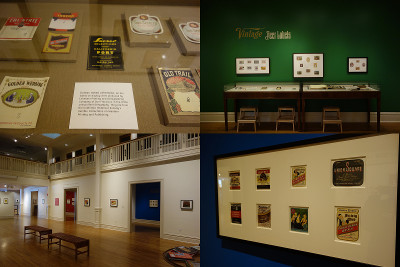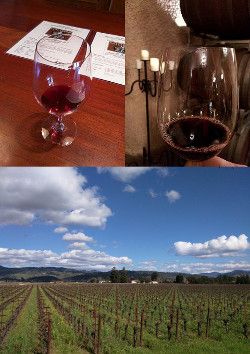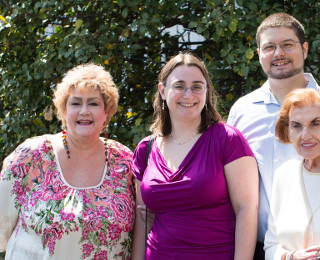Just over a week ago I returned to San Francisco from a visit back east. I imagine trips back to Philadelphia will grow less noteworthy as we grow more accustom to having property there as well. Visits may cease having specific reasons and instead just be a part of our lives. This wasn’t one of those trips though, I had a specific agenda going in to spend the week going through and organizing my mother-in-law’s belongings.
When we laid her to rest back in February things were a bit of a whirlwind. Very little time was spent going through her belongings as we quickly packed up her apartment and dropped all the boxes in our den at the townhouse before getting back to funeral arrangements, other immediate end of life tasks, and time spent with family during our visit. When I arrived in Philadelphia for this trip, I had my work cut out for me.
The last snow of the season was also in recent memory for the area. Though much of the naturally fallen snow around had melted, piles remained all over my neighborhood. As the week progressed, a series of rain storms coming through the area and warmer weather meant that by the time my trip came to a close much of the snow was gone. I was fortunate weather-wise with many of my plans though, even the ones that took me outside largely landed on the dry parts of my visit.
I spent Monday-Friday working nominally 9-5 (earlier or later depending on the day, meetings scheduled). It was a great test for my ability to interact with the team remotely during a normal work week. Fortunately the team is used to being distributed and I have been working from home often even when I’m in town, so it’s not been a huge culture shift for any of us. It was also good to get comfortable working in that space, having breakfast and lunches at the townhouse and starting to develop a normal life routine out there instead of feeling like I’m on a trip.
Since I was working, it took me the whole trip to get through her 20 or so boxes (excluding clothes), but it wasn’t just about time. I knew this work would be difficult. The loss was still somewhat fresh, and though MJ was just a call or text away, it was still hard going through all of her things on my own. There’s also no denying the personal impact that seeing someone’s life packed into 20 boxes. How many boxes would I end up with? What would my family surviving me do with it all? What is sentimental to me but would be confusing or unimportant to almost anyone else? What makes me happy today but will be a burden-of-stuff to those who come after me? All of this lead to a great amount of care and respect as I went through to catalog and repack all of her things, and decide what few items here and there could be donated, which ended up being almost exclusively clothes and linens we had no use for.
While I was there, regular updates also came in from MJ about Simcoe’s rapidly declining health. Not all communication was sad though. I was getting pictures and updates about what was going on in San Francisco, and was able to loop MJ in whenever I had questions or comments about things. I ended up having to bring a few piles of paperwork home with me, but staying in touch was really nice.
To balance the difficulty presented by all this, I also spent time with friends and family. The Sunday following my arrival I took advantage of the nearby train station for the second time since moving into the townhouse to head to downtown Philly. When I lived in the area previously I’d never lived near a rail line, and my use of public transit was rare. As a result, proximity to a regional rail line was not an intended goal of where we ended up buying, but it’s quickly turning into something I value considerably. Living in the bay area has turned me into quite the rail and public transit fan. In the past six months the amount of time I’ve spent on Philly public transit has rivaled what I experienced while living in the area. City life here in San Francisco has also reduced my apprehension about driving in cities, but I’m still not super keen on dealing with traffic or parking once I get to near my destination downtown, and I actively enjoy train rides. The line I take down to the city runs hourly and takes 40 minutes to drop me off at Market East station, nearly matching what I’d get driving when traffic and parking are considered.
The end of my train ride brought me to a lunch with my friend Tom at Bareburger. They had a surprisingly option-filled menu for a burger place, and I think I’d go back for their milkshakes alone and I don’t think I’d be able to resist adding duck bacon to my burger. It was a pleasure to catch up, Tom was one of those friends who I met through LiveJournal well over a decade ago, and in spite of living in proximity to each other for years, our in person time spent was quite limited.
This trip also afforded me the opportunity to have dinner with my friend Jace. We hadn’t seen each other in probably eight years, but he lives not too far from the townhouse and we’ve kept in touch online. He’s also the designer who came up with the last two iterations of the main page of princessleia.com and we’ve both published books in the past year, leading to piles of options for discussion. Given his proximity to our new place I hope we can make more time to hang out in the coming years, it was nice to reconnect.
Some move-in work progressed on the townhouse as well as we customize it to our liking. My brother-in-law came over to do some wall excavation off or our garage to see if a closet could be put in under the stairs. Success! The void we speculated existing does indeed exist and we’ll be working with him on a quote to do the formal build out work in the coming months. After the wall work, I joined him, his mother and my father-in-law for a wonderful dinner at the nearby Uzbekistan Restaurant on Bustleton Ave in Philadelphia. It was my first time there, but after enjoying their culinary delights, it won’t be my last.
On Wednesday I met up with my friends Crissi and Nita to see Beauty and the Beast for what was the second time for all three of us. We went to one of the new theaters that serves dinner along with the movie due to time constraints with Nita’s pre-surgical eating schedule, and then met afterwards for dessert elsewhere so we could catch up and actually talk.
And pre-surgical? Nita was having a procedure done the following morning. In spite of her living thirty minutes from my place, fate would have it that the center she went to for the procedure was just a couple miles from the townhouse. On Thursday I headed over right after work to spend a few hours with her and several folks who dropped in to visit her throughout the evening. When she was discharged the following afternoon her and her sister came over to my place to spend the night so she wouldn’t have the thirty minute drive home so soon after surgery. I really enjoyed the company, making the first proper meal not by myself for dinner with our new pots and pans (spaghetti!), and a spread of omelettes the following morning. We also engaged in a Pirates of the Caribbean marathon, making our way through three of the movies, since I’d somehow neglected to see any of them.
Time constraints got in the way of plans to visit some of my friends in New Jersey on Saturday, which I’m disappointed about but couldn’t be avoided. My final day in town was Sunday and spent with yet another friend, making our way down to Delaware for a vintage toy show, and then taking some time before my flight for a walk in a local park where we could enjoy the weather and talk. It was the most beautiful day of my trip, and though it wasn’t particularly warm, the temperatures in the 50s made for a San Francisco-like feel that I have come to really enjoy taking walks in.
I haven’t had the easiest time over the past few months, and this visit definitely continued in the vein of complicated emotions. Rebuilding the in-person relationships that had largely shifted to being online since I moved away has brought some peace to what has been a difficult time. I’m incredibly grateful for the wonderful people I have in my life, and am reminded that of those finally organized boxes that my mother-in-law left behind, 20% of what I went through were photo-based. Photos of friends, family, various moments in her life that she held on to through the years. In my often work-focused life, it was a good reminder of what is important in life besides what we accomplish professionally. I need the people I love and care for to really make me feel whole.
And upon returning home, MJ met me at the airport with roses. I love and am loved, so much to still be grateful for.
